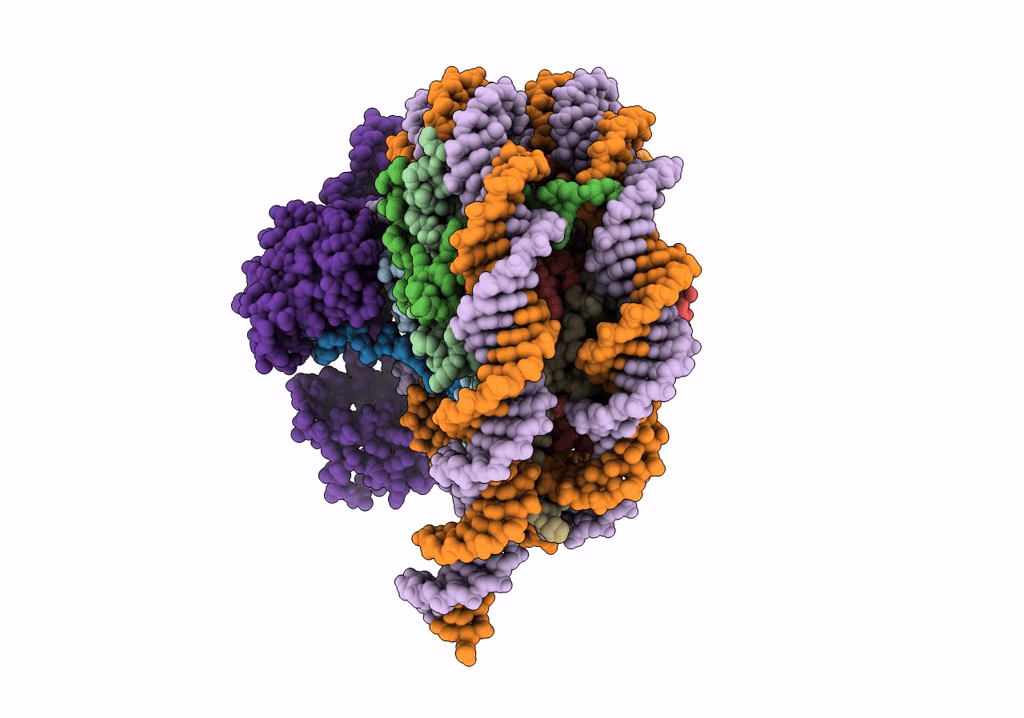
Deposition Date
2022-01-20
Release Date
2022-03-02
Last Version Date
2024-02-21
Entry Detail
PDB ID:
7TN2
Keywords:
Title:
Composite model of a Chd1-nucleosome complex in the nucleotide-free state derived from 2.3A and 2.7A Cryo-EM maps
Biological Source:
Source Organism:
Xenopus laevis (Taxon ID: 8355)
synthetic construct (Taxon ID: 32630)
Saccharomyces cerevisiae (Taxon ID: 4932)
synthetic construct (Taxon ID: 32630)
Saccharomyces cerevisiae (Taxon ID: 4932)
Host Organism:
Method Details:
Experimental Method:
Resolution:
2.30 Å
Aggregation State:
PARTICLE
Reconstruction Method:
SINGLE PARTICLE


